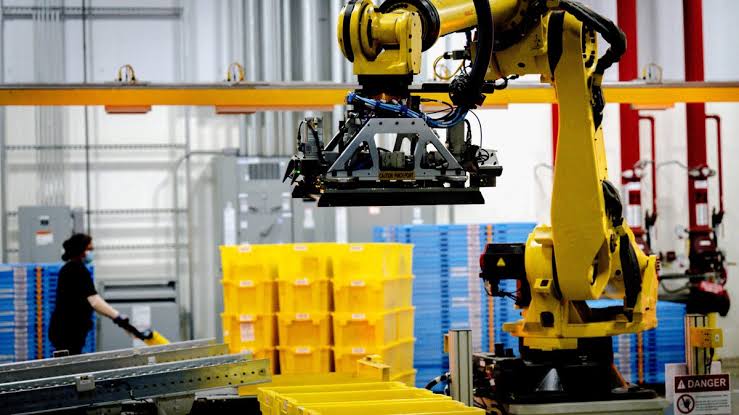Emergence of Artificial Intelligence, Amazon plans to replace the barcodes with computer’s vision. Amazon is planning to install cameras that can recognize products with computer vision, no barcodes needed. Eventually the system will support robots.
With the emergence of Artificial technology, robots may be the future of the world but robotic arms are not good at using old steadfast form of technology: the barcode. Robots struggle to troubleshoot barcodes as it has become very challenging to scan the barcodes of oddly shaped products.
On Friday, the company the company revealed its plans to kill the barcodes.

However, the e-commerce giant has created a camera system that can monitor items flowing one by one down conveyor belts to ensure they match their images. Hence, in near future Amazon’s AI specialists and roboticists hope to integrate the technology with robots. That can recognize items as they pick up and turned around.
“Solving the problem so robots can pick up items and process them without needing to find and scan a bar code, it’s fundamental”, said Nontas Antonakos, an applied science manager at Amazon’s computer vision group in Berlin. However, it will help us get packages to customers more quickly and accurately”.
According to Amazon the system is currently in use in Barcelona, Spain, Germany and Hamburg. In addition, it is also stated by the company that it’s already speeding up the time it takes to process the packages there.
The technology will share across Amazon’s business. Therefore, it will be possible for people to see a version of it at a Whole Foods or another Amazon-owned chain.
According to Amazon, the issue that the system solves-in items being sent to customers. On the other hand, when you consider that how many items a warehouse processes in a day. Even in very infrequent mistakes add up to noticeable slowdowns.
Amazon AI experts had started building up a library of images of products. The images and the data about the product’s dimensions fed the earliest versions of the algorithms. Whereas, the cameras constantly captures new images of items to train the model with.
If we count the algorithm’s accuracy rate was between 75% and 80% when first used which Amazon considered a promising start. As per the company, the accuracy is now at 99%. The system faced initial problems when it failed to differentiate between colors. At the prime day promotion, the system was unable to distinguish between two different colors of Echo Dots.
However, the only difference among the packages was a small dot that was either blue or gray. Now the system can easily assign confidence score to its ratings that only flag items are very sure that are incorrect.
Alas, it will be a challenge to fine tune multi-model identification system in order to assess products that are handled by people. That’s why the ultimate goal is to have robots handle them instead.
Read more:
Amazon Will Give $5 To Delivery Driver If You Ask Alexa To Say Thank You
Apple And Amazon To Restart Advertising On Twitter After Brief Pause





 TikTok To Follow Google And Open Offices In Pakistan
TikTok To Follow Google And Open Offices In Pakistan